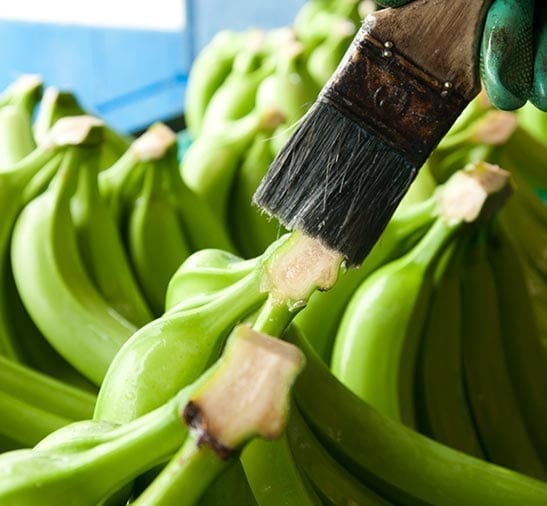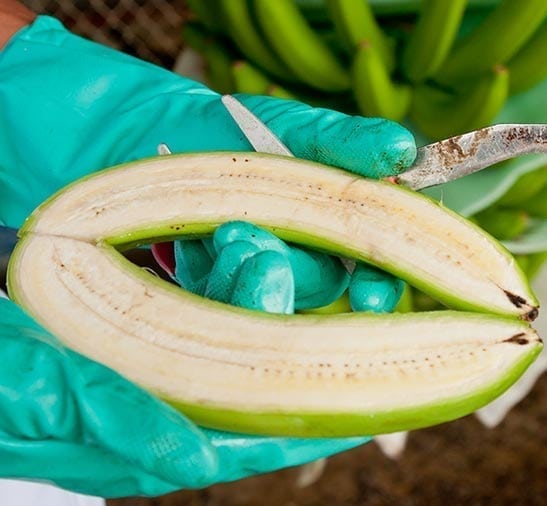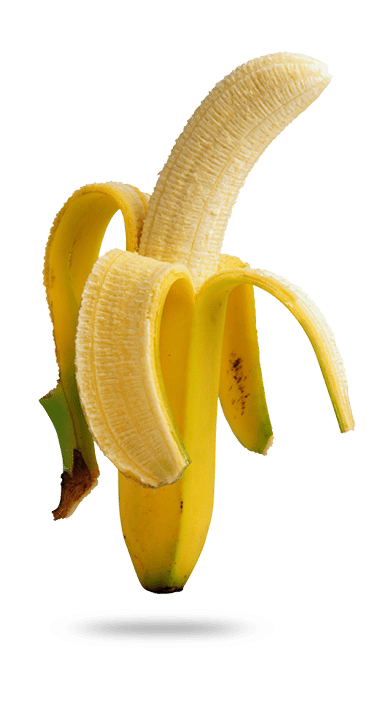422mg
Potasio
105
Calories
1.3g
Calories
1mg
Sodium
0mg
Cholesterol
PRODUCTION
We produce Quality Bananas and we meet all the requirements to be accepted and qualified for export.
QUALITY
Sabrostar Fruit Company Quality: Quality derived from good agricultural practice because we think of the consumer.
HEALTH
For your Health: We select for you the best fruits from our plantations to provide quality food security.
HISTORY OF BANANAS IN ECUADOR
The origin of the banana in the world is apparently in the Indian subcontinent in Asia and it is transferred to America together with the migratory currents of European merchants in the 16th century. From there several varieties of musáceas grow naturally and wild in.
The growing demand for bananas in Europe and the United States and the impact of pests and hurricanes on Central American plantations have led the government of Galo Plaza Lasso to modernize the production and export of the fruit.
Cheap labor, the availability of agricultural land, the government development policy -including loans and infrastructure works- and the absence of plagues and hurricanes in the country are the perfect conditions to eventually position Ecuador as the world’s leading producer of the fruit.
Banana exports dominated the Ecuadorian economy until the 1970s, when it was supplanted by oil.
Ecuador currently exports an average of 5 million boxes weekly, cultivated on approximately 230,000 hectares.
The name plantain, banana, banana, cambur, mole or guineo groups a large number of herbaceous plants of the genus Musa, both hybrids obtained horticulturally from the wild species of the genus Musa acuminata and Musa balbisiana as well as genetically pure cultivars of these species. .
Originally classified by Linnaeus as Musa paradisiaca in 1753, the type species of the genus Musa, subsequent studies have led to the conclusion that the complex taxonomy of the genus includes numerous hybrids, of varied genetic composition, and a strictly sui generis system of classification to account for this variation.
However, according to the rules of the International Code of Botanical Nomenclature, the Linnaean name has priority, and continues to be used —both in its original form and in the modified Musa paradisiaca, which indicates that it is a hybrid— to designate generically to these varieties.
An export fruit must meet several requirements at the time of harvest and be accepted and qualified for export.
From the time the strain (seed) is planted until the first flowering occurs, it lasts from 24 to 32 weeks depending on the variety and environmental conditions. Once the plant emits the acorn (flower = acorn = cluster), the agronomic work is very important and lasts from 9 to 13 weeks until harvest.
Depending on the warm or cold season, the cutting age is determined by the filling conditions of the fruit, that is, that it has reached the calibration parameters (thickness) and finger length. This condition is met between 9 and a maximum of 13 weeks after flowering.
The transport of the bunches from the plantation to the processing plant (packing plant) is done by means of the cable track, in which the bunch is suspended with the help of a device called “garrucha” that has a special bearing that Allows you to ride on the cable. This with the aim of avoiding damage from handling, since in these conditions the fruit is very susceptible.
Factors that affect plant growth and productivity are broadly classified into internal (genetic) factors and external (environmental) factors.
Internal factors are related to the genetic variety used
External factors are related to climate (sunlight, temperature and rain), biotic agents (beneficial and harmful organisms), type of soil and of course human intervention that affects or modifies to some extent some environmental factors that determine agronomic management. . For example, areas with a large amount of sunlight and warm temperatures (30°C) are potentially more productive than other areas with different characteristics.
It is very important to highlight agronomic management, through the implementation of varied and timely agricultural practices, it contributes to obtaining high yields. Among the main ones, the sowing density, desuckering, adequate distribution of plants in the field, control of weeds, pests and diseases, irrigation, drainage, nutrition and appropriate agronomic work practices in the care of the bunch (sheathing, identification, defoliation, propping), which contribute to the fruit having the best quality characteristics.
Banana Production
Banana production is rigorously cared for through high technological standards that aim to preserve our product from the selection and treatment of plants through various agronomic processes:
- Sowing,
- undo,
- Weed Control,
- Preventive Quality Works,
- Holsters, Identification,
- Timely Protection of the Cluster.
In order to get a completely clean and healthy fruit.
Qualification
In the packinghouse, the parameters of productivity, bunch weight, number of hands, calibration, and finger length are recorded. Trained personnel perform the qualification of the bunch to continue with the processes of:
- Disarm,
- Selection,
- gajeo,
- Weight,
- Placement of Labels,
- and Packaging of the fruit.
The process
We use an irrigation and drainage system accompanied by a Feritization and Phyto-Sanitary Control program. After 10 to 12 weeks of appearance, time in which the fruit meets the ideal physiological conditions, the moment of harvest arrives.










NUTRITION FACTORS
% Daily Value* | |
|---|---|
Total Fat 0.3 g | 0% |
Saturated fat 0.1 g | 0% |
Polyunsaturated fat 0.1g | |
Monounsaturated fat 0g | |
Cholesterol 0 mg | 0% |
Sodium 1 mg | 0% |
Potassium 362 mg | 10% |
Total Carbohydrate 23 g | 7% |
Dietary fiber 2.6 g | 10% |
Sugar 12 g | |
Protein 1.1 g | 2% |
Vitamin | % Daily Value* | Vitamin | % Daily Value* |
|---|---|---|---|
Vitamin A | 1% | Vitamin C | 14% |
Calcium | 0% | Iron | 1% |
Vitamin D | 0% | Vitamin B-6 | 20% |
Vitamin B-12 | 0% | Magnesium | 6% |
*Percent Daily Values are based on a 2,000 calorie diet. Your daily values may be higher or lower depending on your calorie needs.

SABROSTAR PARAMETERS
PARAMETERS | PREMIUM FRUIT | RECOVERY FRUIT |
|---|---|---|
cutting age | maximum 13 weeks | maximum 13 weeks |
finger length | minimum 8 inches
| from 7.5 inches |
Calibration (32nds of an inch) | 39 to 46 | 38 to 48 |
Weight (pounds) | 41.5 pounds of fruit | 46 pounds of fruit |
segments per box | from 14 to 18 | from 18 to 24 |
fingers per box | 95 to 108 | 110 or more |
Planting: Leaves to harvest | Minimum 7 leaves | Minimum 7 leaves |
TOLERANCES | ||
|---|---|---|
spoilage | None | Moderate |
scars | None | Mild |
Látex | None | Mild |
knife cut | None | Mild |
malformed crowns | None | Moderate |
Insect Damage: Mealy Bug, Scale | None | Moderate |
Red stain | None | Mild |
animal damage | None | Mild |
Diseases | None | Mild |
Physiological damage: Finger
cracked, malformed, twins,
maturity spot, chimeras | None | Moderate |
